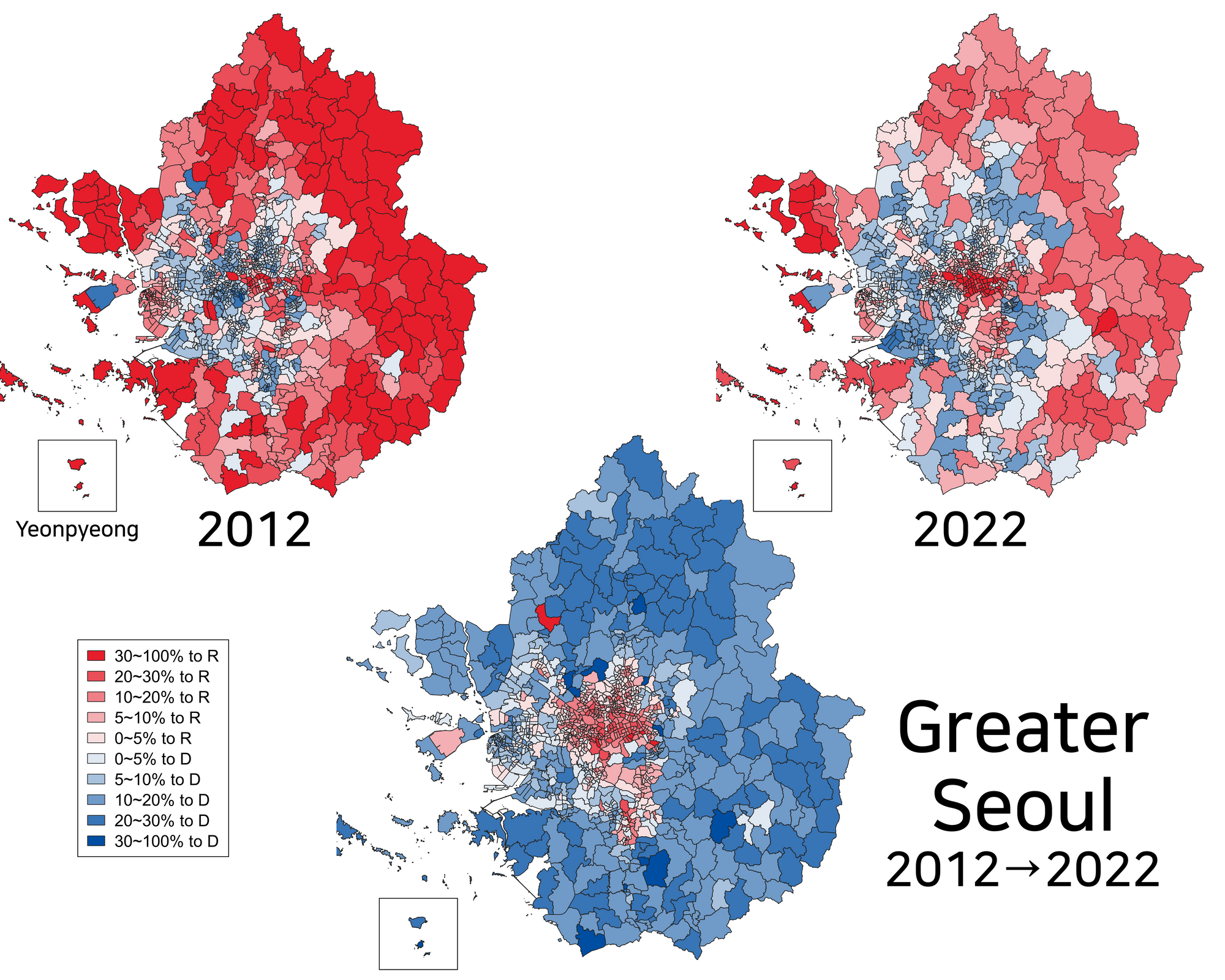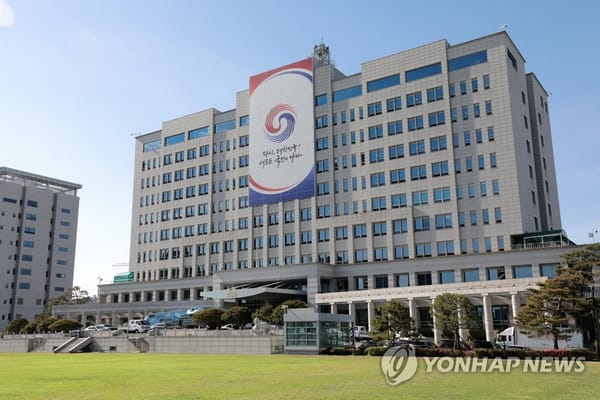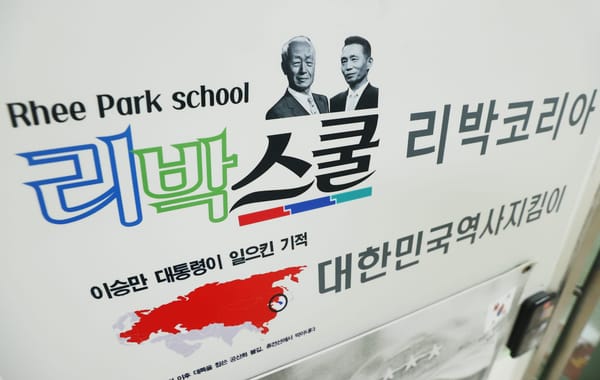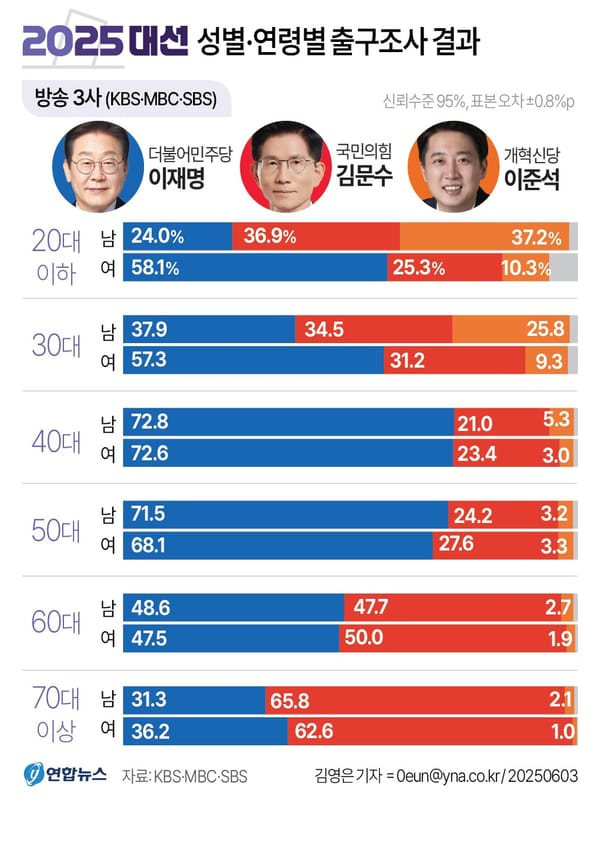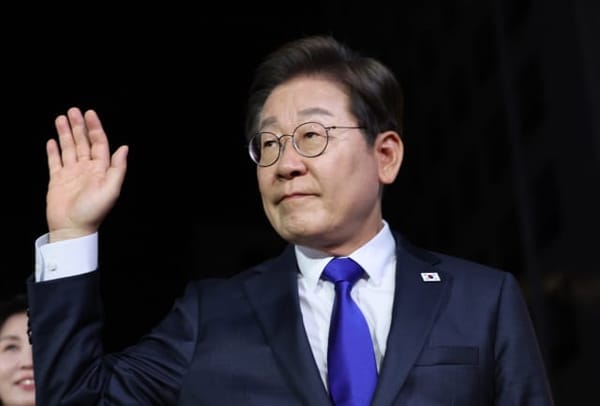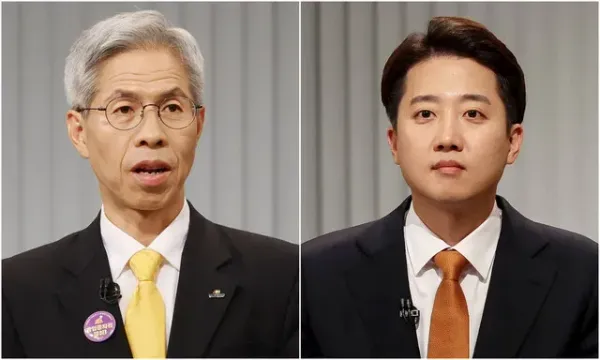Image: Shift in the voting patterns in Seoul metro area from 2012 to 2022. Credit: Hyunwoo Joo.
Using publicly available data, political researcher Hyunwoo Joo produced a visualization of how voting patterns shifted over the decade between 2012 and 2022 in Seoul 서울, Incheon 인천 and Gyeonggi-do Province 경기도, in which more than half of all South Koreans live. The result is striking: Seoul became significantly more conservative between the two presidential elections in 2012 and 2022, while Incheon and Gyeonggi-do Province became significantly more liberal over the same period.
Joo began his research because he noticed that in the 2012 presidential election, Seoul voted for the liberal Moon Jae-in 문재인 while Incheon and Gyeonggi-do went for the conservative Park Geun-hye 박근혜, but the voting patterns flipped in the 2022 presidential election between liberal Lee Jae-myung 이재명 and conservative Yoon Suk-yeol 윤석열. Joo set out to find exactly where, and by how much, Seoul red-shifted and Incheon/Gyeonggi-do blue-shifted.
To Joo’s surprise, the red-shift in Seoul and the blue-shift in Incheon/Gyeonggi-do took place evenly across the board. In Seoul, the red-shift of the wealthy Gangnam-gu 강남구 district is well documented, but even the outlying districts of Eunpyeong-gu 은평구, Geumcheon-gu 금천구 and Gwanak-gu 관악구 - traditionally middle class neighborhoods that reliably voted blue - showed a strong shift toward voting conservative. The reverse was true in Gyeonggi-do, where towns like Pocheon 포천, Gapyeong 강평, Yangpyeong 양평, Yeoju 여주, and Icheon 이천 - farm towns that usually voted red - saw significant liberal gains over the last decade.
Joo hypothesizes that Seoul’s skyrocketing real estate market occasioned this change. With housing becoming more expensive, Seoul lost around 7% of its population between 2012 and 2022, even as the national population increased by 2%. The middle-class who were priced out of Seoul moved to the suburbs in Gyeonggi-do, which saw a 12% population growth over the same time period. Joo expects this trend to continue in the near term, making it an important point to watch for the 2024 Assembly Elections 총선.


